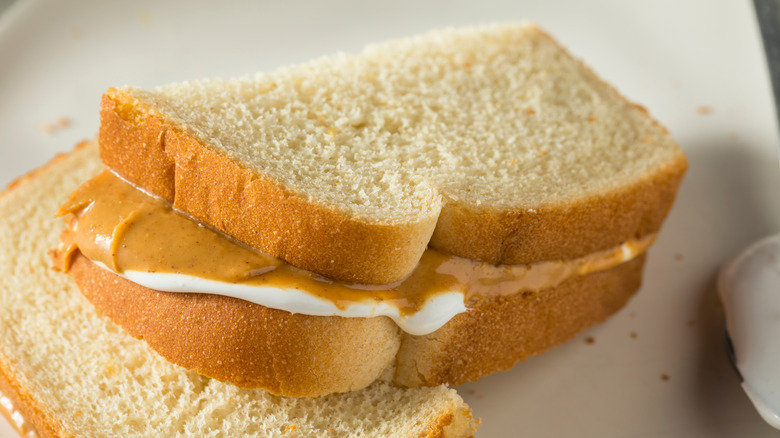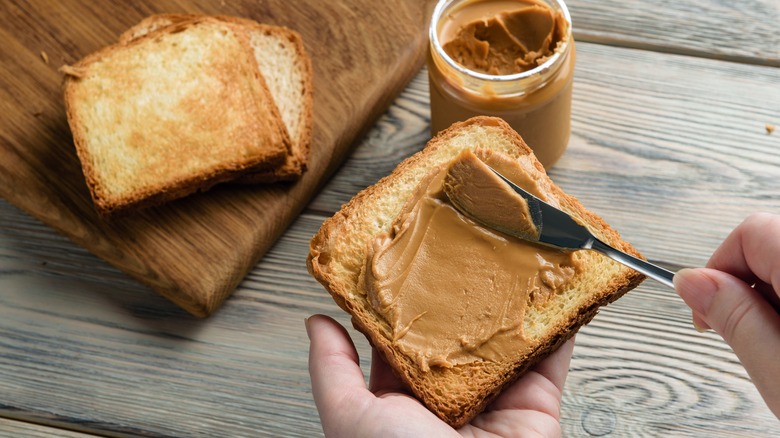Peanut Butter And Mayo Sandwiches Were Once As Common As The PB&J
Peanut butter and mayonnaise sandwiches may have fallen by the wayside, but at one point, they were as popular as our PB&Js are. Smithsonian Magazine shares that peanut butter was first invented by Incans centuries ago, but the version we know today was commercialized by none other than John Kellogg, founder of Kellogg's. Kellogg advertised this nut spread as a health food, a meat alternative that would provide more protein than a porterhouse steak. Eventually, by the end of the 19th century, peanut butter was widely used among Americans, and it became a staple for them with the advent of sliced bread.
As Kellogg promised, the cheap cost of peanuts made peanut butter a great substitute for meat products and dairy butter. Substituting peanut butter for meat opened the door to combinations like peanut butter and mayonnaise, which was especially popular in the South. By today's standards, we may find the combination of vinegar and nut butter strange, but it wasn't so bad for people who had to ration. In fact, there was a plethora of savory peanut butter dishes, including a peanut butter soup made from milk, peanut butter, vegetable stock, and pepper (via Fox News). Or the peanut loaf, which doesn't seem jarring at first, but is surely a shocker: a meatless meatloaf of peanut butter mashed with cooked rice, chicken bouillon, and ketchup.
A Great Depression meal
The peanut butter and mayo sandwich wasn't always something to raise an eyebrow at. Garden & Gun states that this very sandwich is what fed many Americans who would've otherwise struggled to afford substantive meals. Mayonnaise, with its high fat content, along with protein-rich peanut butter, made a satisfying meal out of relatively cheap items. PB&M was popular in the South in the 1930s, but it became a country-wide snack when newspapers began to suggest that people add mayonnaise to make their coarse, chunky peanut butter more "spreadable," per Garden & Gun.
Atlas Obscura notes the variations of the sandwich that included bacon, similar to the infamous Elvis sandwich (a peanut butter sandwich with bacon and bananas). Hellmann's mayonnaise capitalized on this peanut butter and mayo trend by coming up with more exciting additions — like pickles and bacon in the "Double Crunch" or apples and marmalade in the "Apple Fandango." Maybe PB&M was invented for financial reasons rather than culinary ones, but this sandwich remains a delicious snack for those who grew up eating it. Divorcing peanut butter from its natural partner, sweet fruit jam, could open it up to more savory dishes — like the iconic PB&M or even a spicy peanut sauce.

